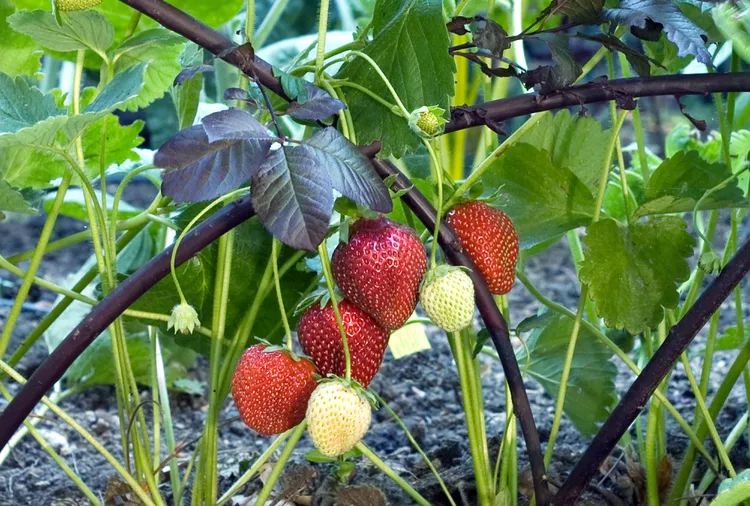Before doing the hard work of establishing a strawberry bed, you should know whether strawberries are perennials. The quick answer is yes. However, a few factors need your attention if you want to keep your strawberry patch going for years. Here's what to know about growing strawberries as perennials or annuals, and how to keep them alive for as long as possible.
Strawberries Are Perennial Plants
Strawberries are low-growing herbaceous perennials. Many varieties are cold-hardy in USDA Zones 4–8, with some tolerating Zone 3 winters if properly prepared for the cold weather. Growers in hot southern climates like Florida often grow strawberries as annuals because the heat beats them up.
Strawberries are categorized by how they fruit: June-bearing, everbearing, or day-neutral. Strawberry plants will live for years but are often considered short-lived perennials because their production slows over time. Eventually, you’re better off replacing them. While June-bearing varieties frequently produce for up to six years, many everbearing or day-neutral varieties are replaced every one to two years for peak production.
Winterizing Strawberries
Like many other types of perennials, strawberry plants begin to change in autumn with the arrival of cooler weather. The leaf petioles become horizontal, so the plant appears to be flatter. Older leaves may change color to burgundy, and growth stops. The plants are acclimatizing to the colder weather and preparing for dormancy.
What often makes people wonder, "Are strawberries perennials" is when their plants look brown or weak in spring. These plants have likely suffered cold injury because of a sudden and early bitter cold snap before they had fully gone dormant.
Tips for Mulching Strawberries
Mulching strawberries is key to your plants' longevity. Properly mulched strawberries survive the cold in good condition. Not only does mulch keep weeds down—strawberry patches hate weeds—but it also protects the flower buds that eventually form the fruit.
Dormant strawberries don’t lose their leaves, so the mulch also prevents desiccation caused by cold winter winds. However, you need to use the right mulch and apply and remove it at the right time. A properly applied mulch mimics the insulating properties of snow. If deep snow cover in your area typically arrives before sustained cold temperatures, you may not need straw, but snowfall is unpredictable. You control when you put the mulch on. Don’t trust your berry crop to the weather.
Best Mulch for Strawberries
Although the name “strawberry” may have origins from the names “strewn berry” or “spreading berry,” reflecting their growth habit, straw really is a perfect mulch for strawberries. Look for dry straw that was (hopefully) not treated with chemicals prior to harvest. Straw from wheat or oats works beautifully. If straw isn’t available, other natural materials like pine needles or shredded leaves will work.
Avoid using hay for mulch. Hay often contains weed seed heads that can make weeding a mess the following year.
When to Mulch Strawberries
Strawberries need to be exposed to some cold before being mulched in order for them to go dormant properly. You don’t need to cover them before the first frost. They need time to acclimatize and be exposed during that period.
Wait for a few hard freezes (below 28°F for at least three hours) and then check the soil temperature. Once the soil temperature cools to 40°F, it’s time to apply mulch. This typically doesn’t occur until late fall.
Loosely mound the straw or other mulch high enough to be about 3 inches deep after it settles. A light wetting with the hose can help hold it in place. If your area is windy and your mulch is likely to become a yard decoration, use bird netting anchored with a couple of rocks to hold it in place until the winter snows arrive.
Remove some of the mulch in spring, raking it into the paths between rows. Again, soil temperature is a good guide. Remove the straw or other mulching material when the soil temperature warms to about 40°F in early spring. If the weather calls for a cold snap, rake the straw back over the plants or use a floating row cover and frost cloth.




















